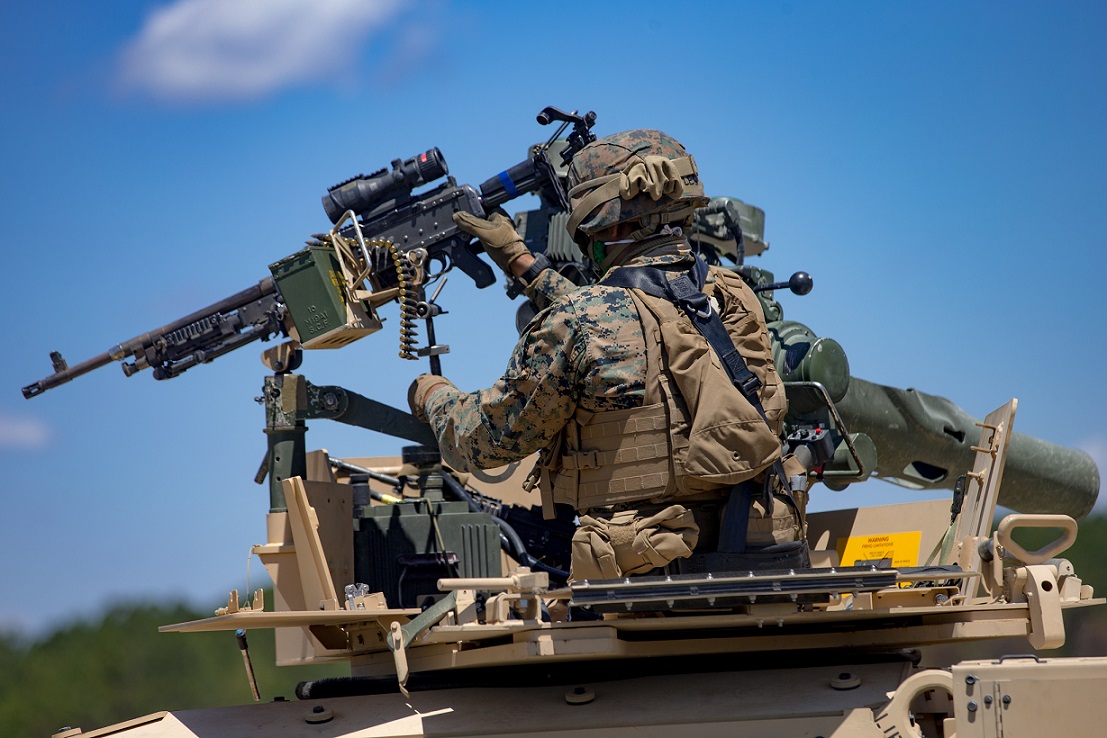This post is also available in:
 עברית (Hebrew)
עברית (Hebrew)
Soldiers may find it challenging to maintain a high level of alertness when driving a combat vehicle across unfamiliar or dangerous terrain. The U.S. Army’s Artificial Intelligence for Maneuver and Mobility, or AIMM, Essential Research Program endeavors to reduce Soldier distractions on the battlefield through the integration of autonomous systems in Army vehicles.
The program seeks to develop the foundational capabilities that will enable autonomy in the next generation of combat vehicles. This include the construction of a robotic combat vehicle that operates independently of the main combat vehicle.
Dr. John Fossaceca, AIMM program manager, said: “The main purpose of this essential research program is to build autonomous systems that help the Army effectively execute Multi-Domain Operations.” “We don’t want Soldiers to be operating these remote-controlled vehicles with their heads down, constantly paying attention to the vehicle in order to control it.”
Manufacturers typically design commercial self-driving cars to operate on pristine roads,
where heavy traffic and crowds of pedestrians play a significant factor in its capabilities. In contrast, the Army often faces environments with diverse terrains and areas that may not even have a road to travel on.
“Soldiers may have to operate in forests or deserts, and they may have to operate in a certain manner like moving stealthily in order to achieve some objective,” Fossaceca said. “This is very different than what’s happening in the autonomous vehicle industry, which is the main model of autonomy available today in terms of autonomous vehicle research.” As a result, this research intends to fill the gaps to cover these unique situations that Soldiers face.
“Future military missions are going to require autonomous vehicles that can determine what the passable routes might be, calculate the best route and make an assessment about what’s happening in the environment,” Fossaceca said. “We want to integrate this autonomous behavior in modern military vehicles so that it feels less alien to the Soldier and can decrease the cognitive burden of the decision-making process.”
In the short term, Army researchers plan to take advantage of recent advances in computing architecture and create a single platform that will first perform narrow AI, or artificial intelligence that can complete very specific tasks consistently, and leverage these capabilities to build a teammate for the Soldier. As time goes on, the systems will be able to do more than just very narrow, specific tasks on the battlefield.
One of the program’s near-term objectives pertains to the development of intelligent mobility with narrow AI in environments with minimum a priori training data. While self-driving cars normally need tremendous amounts of data to train the vehicle’s intelligent system, Army researchers have developed techniques to reduce the training time and data required.
Other examples include Natural Language capabilities to enhance communication between Soldiers and their vehicles as well as tactical teaming with distributed assets, where the intelligent system changes and adapts as the mission progresses, as army.mil. reports.
In the long term, Army researchers want future combat vehicles to be able to look at the context of the environment and obtain helpful clues. This capability would require the intelligent system to analyze complex, adversarial environments and develop possible courses of action.


























